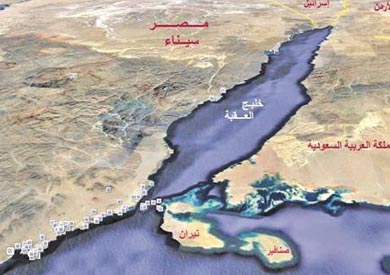
The Egyptian government appealed against the administrative court nullification of the al-Sisi plan to cede control of the two Red Sea Islands to Saudi Arabia. The maritime border demarcation agreement was signed in April between Egypt and Saudi Arabia.
Egypt Administrative Court ruled the invalidity of the controversial demarcation agreement that stipulates the transfer of Tiran and Sanafir islands to Saudi Arabia. A number of lawsuits were filed in an attempt to nullify the agreement.
At an earlier session, the Administrative Court called the government to present a copy of the agreement while lawyers presented various evidence, documents, and maps that support their claim that the islands are Egyptian. Khaled Ali- the human rights defender and former presidential candidate- presented to the court an Atlas that he said was prepared by the Egyptian military in 2007 to confirm that Tiran and Sanafir are Egyptian and fall under Egyptian sovereignty.
The court provided several reasons for rejecting the deal, including former agreements, old maps, and an index of names of Egyptian places made by the finance ministry in 1945 and other official documents, practices and facts dating back to 1884.
The court issued a document with the arguments of its verdict, “According to the above reasons, it is definite that both the islands of Tiran and Sanafir belong to the Egyptian territories and are located within the borders of the Egyptian state and that Egypt has continuously exercised sovereignty over the two islands.”
Although the verdict is not final and can be appealed by the Egyptian government, it is still “enforceable” and it makes the recent deal null and void, preventing the Egyptian parliament from discussing the issue.
Shawki al-Sayyid, the law professor at Cairo University, said that “The verdict is enforceable and binding to all the country’s institutions including the parliament, and the government’s appeal is to be determined by the Supreme Administrative Court.”
In the same context, the novelist Ahdaf Soueif said, “This is a very important ruling; it means essentially that the people who went out to insist that these islands are Egyptian, and some of them are still serving jail sentences now, were right.”
After the court’s verdict, lawyers, activists, and spectators rushed out of the courthouse cheering loudly and expressing their happiness over what they deemed as the best outcome for the ruling. Moreover, Egyptians expressed their support to the administrative court verdict on the social media whereas the hashtag Tiran and Sanafir are Egyptians was reported as one of the most circulated hashtags on Twitter.
The controversial agreement that gave away the two strategic islands of Tiran and Sanafir to Saudi Arabia has led to massive criticism and outrage among the Egyptians. Critics, journalists, and activists accused Abdel Fattah al-Sisi of “selling Egypt” to Saudi Arabia in return for financial aid.
In response, thousands of Egyptians took to the streets in protests on April 15 (Land Day) and April 25 (Sinai Liberation Day) against the agreement, calling for the “Downfall of the Regime.” The demonstrations were the first huge movement against the al-Sisi regime that included different political affiliations and groups. The Egyptian security forces led arrest campaigns of activists and journalists who opposed the transfer of the islands.
The Egyptian courts have fined tens of the protesters while others were handed down prison sentences that ranged from two to five years. In addition, a court sentenced seven defendants to eight years in prison each and fined them.
On the other hand, al-Sisi defended the agreement in a televised speech in April, saying that “Egypt does not sell its land to anyone and it does not take anyone’s land.” Moreover, the Egyptian cabinet assured in a previous statement that the strategic islands are Saudi, adding that Saudi Arabia requested Egypt to protect them in 1950, and they have been under Egypt’s control since then.
The two Red Sea islands, which are strategically significant as they both control maritime activity in the Gulf, are located at the Gulf of Aqaba. The Tiran Island is located in the Gulf of al-Aqaba, about 5 or 6 km from the Sinai Peninsula, and it has a total area of about 80 square km. Sanafir Island lies to the east of Tiran with a total area of 33 square km.



